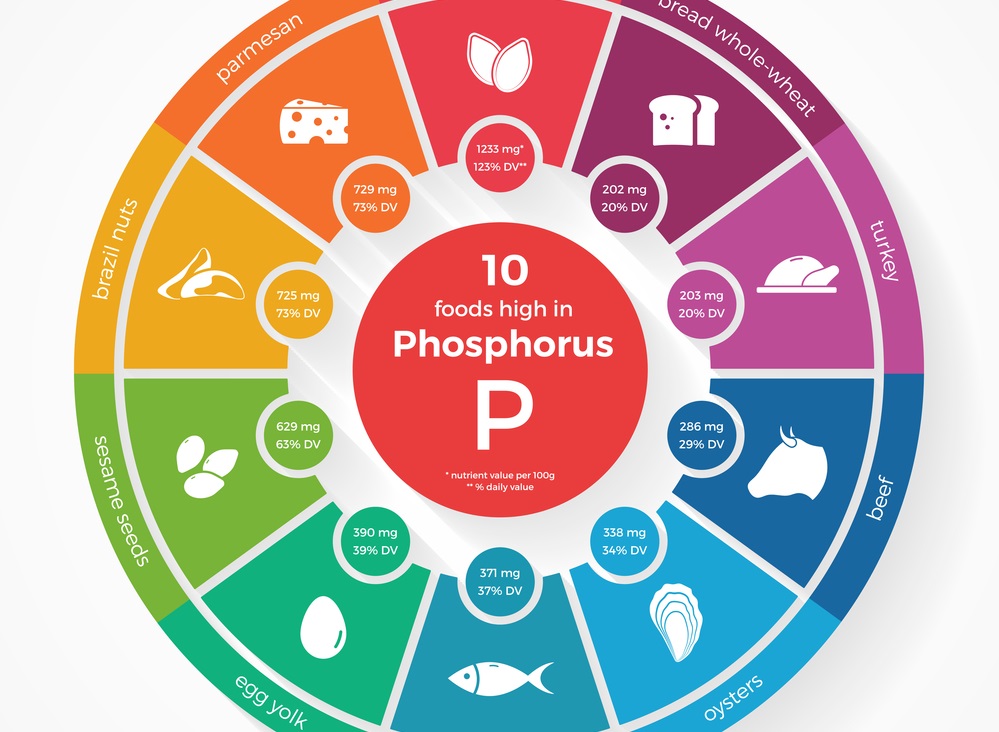
Phosphorus
Phosphorus is the second most abundant mineral found in the body after calcium. Types of phosphorus include white phosphorus, red phosphorus, and black phosphorus. Our bodies need phosphorus for many vital functions, such as purifying waste products and repairing damaged tissues and cells. Most people get the phosphorus they need from food. It is only natural that the amount of this mineral in the body should exceed the daily needs.
Only in kidney patients or people who take more phosphorus than their daily needs, or people who are deficient in calcium, may their phosphorus levels be higher than usual. Certain physical conditions (such as diabetes and alcohol consumption) or the administration of certain medications (such as antacids) may lower the body's phosphorus levels. However, it should be noted that high or low can cause some problems, such as heart disease, joint pain, or fatigue.
The role of phosphorus in the body
• Strength of bones and teeth
• Helps to clean waste products in the kidneys
• Managing how the body stores and uses energy
• Production of DNA and RNA as genetic blocks of the body
• Balance in the use of some vitamins and minerals needed by the body such as vitamin B, vitamin D, iodine, magnesium, and zinc
• Help with muscle contraction
• Heart rate regulation
• Facilitate the conduction of neural messages
• Reduce muscle cramps or muscle aches after exercise.
Phosphorus in food
Most foods contain phosphorus. Protein-rich foods are also a rich source of phosphorus:
• Meat & Poultry
• Fish
• Milk and dairy products
• egg
• Nuts and nuts
• beans
Some protein-free foods may be high in phosphorus, such as:
• Whole grains
• potato
• Garlic
• Nuts
• Carbonated drinks (phosphoric acid is used to produce these drinks)
• Whole grains used to make bread contain more phosphorus than white flour
How much phosphorus does the body need?
The Linus Paying Institute announces the amount of phosphorus received based on age:
• Adults (19 years and older): 700 mg
• Teenagers (9 to 18 years): 1250 mg
• Children (4 to 8 years): 500 mg
• toddlers (1 to 3 years): 460 mg
• Infants (7 to 12 months): 275 mg
• Infants (0 to 6 months): 100 mg
The harms of consuming too much phosphorus in the body
Consumption of more phosphorus than the body needs dramatically increases the risk of food poisoning. In general, receiving more minerals than the body needs can cause diarrhea, hardening of the body's organs and soft tissues.
High levels of phosphorus can severely impair the absorption of other minerals such as iron, calcium, manganese, and zinc. Phosphorus may combine with calcium to build up muscle tissue. High levels of phosphorus in the blood are rare. Only kidney patients or people whose bodies cannot regulate calcium may have high levels of phosphorus in their blood.
Some medications may lower phosphorus levels in the body, such as:
• Insulin
• Angiotensin-converting enzyme inhibitors
• Corticosteroids
• Antacids
• Anticoagulants
• Complications of phosphorus deficiency in the body
• Joint and bone pain
• Decreased appetite
• Irritability or anxiety
• Fatigue
• Osteoporosis in children




